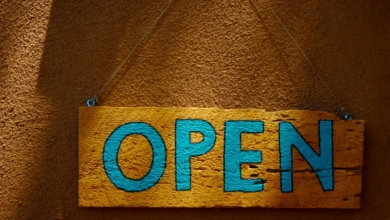Can Geothermal Startups Power Europe’s Clean Energy Future?

▼ Summary
– Engineers in Germany are drilling 8 km deep to harness geothermal energy from Earth’s core, aiming to provide clean power and reduce fossil fuel reliance.
– Eavor’s innovative closed-loop system uses hot rocks and thermosiphon technology, eliminating the need for underground water reservoirs or pumps.
– Geothermal energy offers reliable baseload power and heat, but currently supplies less than 1% of Europe’s energy due to high costs and geographic limitations.
– Startups like GA Drilling and Borobotics are developing advanced drilling technologies to make geothermal energy more accessible and cost-effective.
– Europe is increasing geothermal investments, with countries like Germany and France setting ambitious targets, but challenges like costs and public perception remain.
Deep beneath the forests of southern Germany, engineers are pushing drilling technology to its limits in pursuit of an ancient yet underutilized energy source. At a site near Munich, a Canadian startup called Eavor is boring nearly 8 kilometers into the Earth’s crust to harness geothermal energy in a way that could transform Europe’s clean energy landscape.
Unlike conventional geothermal plants that depend on naturally occurring hot water reservoirs, Eavor’s system operates like a massive underground radiator, circulating fluid through sealed pipes in hot rock formations. This closed-loop design eliminates the need for specific geological conditions, potentially making geothermal viable almost anywhere.
The key innovation lies in depth and thermodynamics. By drilling deep enough to reach rocks heated to 160°C, the system creates a natural circulation where heated water rises while cooler fluid descends—no pumps required. At the surface, heat exchangers transfer this energy to district heating systems or convert it into electricity.
With €370 million in funding, including support from the EU Innovation Fund, Eavor’s Geretsried project could become a blueprint for scalable geothermal energy. If successful, it would provide constant, emissions-free power—a crucial advantage over intermittent wind and solar.
Europe’s Geothermal Opportunity
Geothermal energy is nothing new—the Romans used it for heating, and Italy built the world’s first industrial geothermal plant in 1911. Yet today, it supplies less than 1% of Europe’s energy. The potential, however, is staggering. The International Energy Agency estimates geothermal could meet global electricity demand 150 times over if harnessed effectively.
Recent geopolitical shifts have reignited interest. “Russia’s invasion of Ukraine changed everything,” says Sanjeev Kumar of the European Geothermal Energy Council. With energy security now a priority, countries like Germany, France, and the Netherlands are aggressively expanding geothermal projects, particularly for heating—a sector responsible for 30% of the EU’s CO₂ emissions.
Breaking Through the Barriers
The biggest hurdles? Cost and drilling technology. Traditional geothermal requires rare geological conditions, while deep drilling remains expensive. Startups like Slovakia’s GA Drilling are tackling this with plasma pulse drills that fracture rock faster, potentially doubling drilling speeds. Others, like Dutch firm Canopus, are reviving oil-industry tech, using steel shot cannons to enhance heat extraction.
Not all geothermal needs to go deep. Ground-source heat pumps, which tap into stable shallow-earth temperatures, offer an efficient way to heat and cool buildings. Swiss startup Borobotics has even developed a robotic drilling worm to slash installation costs—a boon for the EU’s goal of 43 million new heat pumps by 2030.
Challenges Ahead
Despite the promise, obstacles remain. High upfront costs and earthquake concerns linger, though closed-loop systems like Eavor’s minimize seismic risks. Governments could accelerate adoption with feed-in tariffs, similar to those that boosted solar and wind. Germany has already set a precedent, guaranteeing Eavor a fixed electricity price until 2042.
If these innovations prove viable at scale, geothermal could shift from a niche player to a cornerstone of Europe’s energy transition—providing always-on power, heat, and grid stability without the land use or intermittency issues of other renewables. The race to unlock Earth’s heat is just beginning.
(Source: The Next Web)



